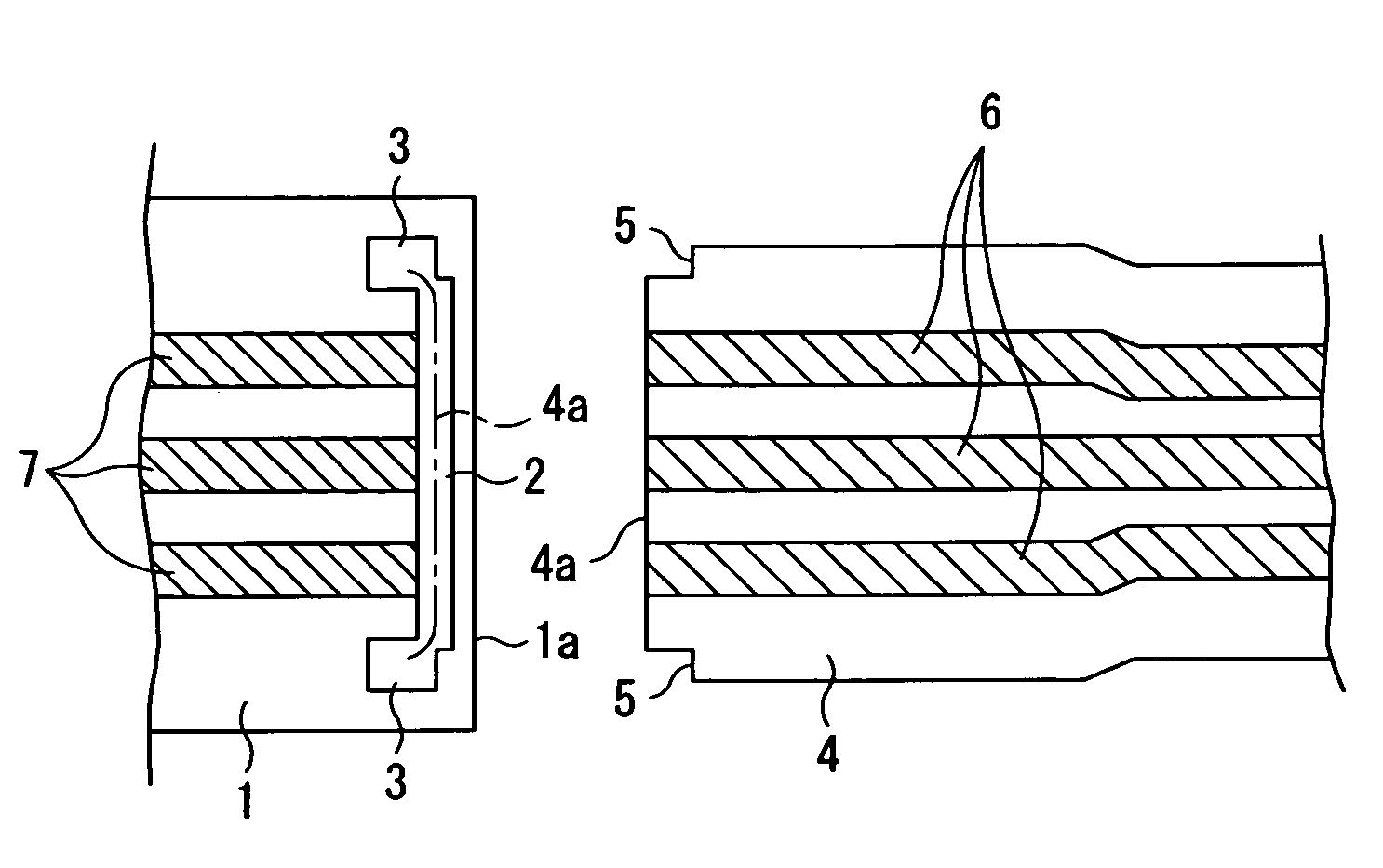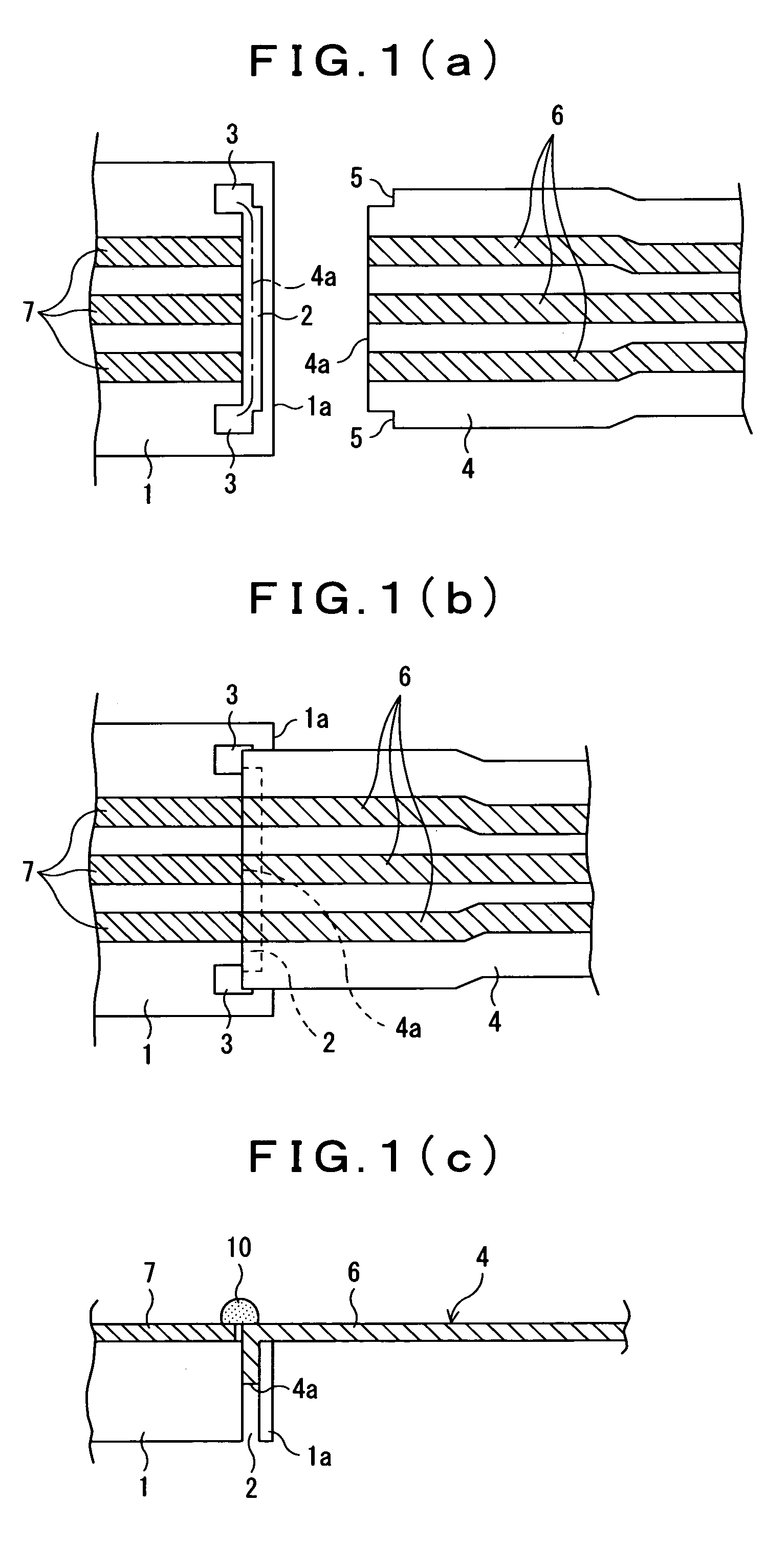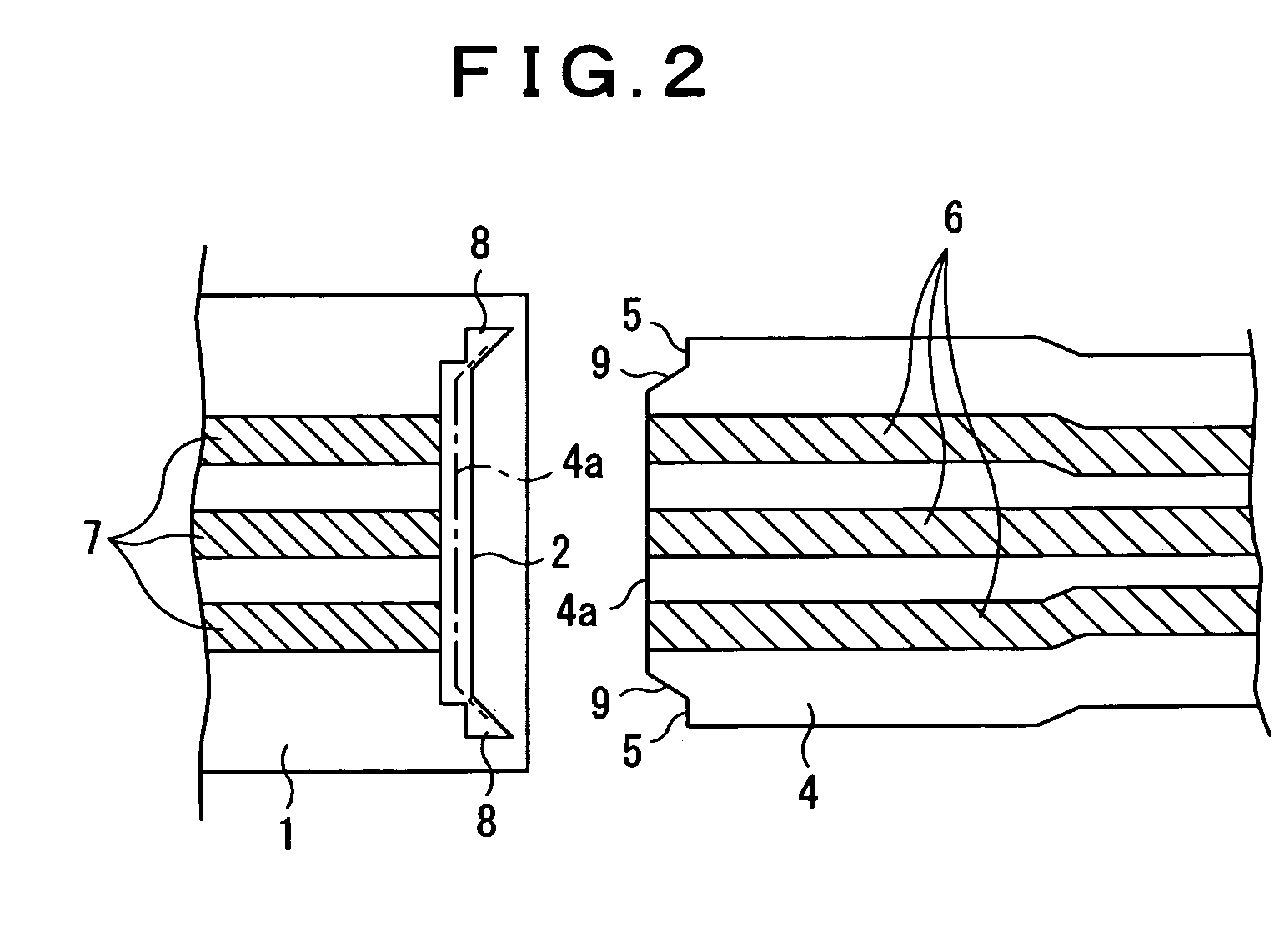Connecting structure of flexible printed circuit board to printed circuit board
a flexible printed circuit board and connecting structure technology, applied in the direction of fixed connections, printed circuit aspects, coupling device connections, etc., can solve the problems of connection between patterns and complicating the shape of flexible circuit boards
- Summary
- Abstract
- Description
- Claims
- Application Information
AI Technical Summary
Benefits of technology
Problems solved by technology
Method used
Image
Examples
first embodiment
[0028]In the connecting structure for connecting a flexible printed circuit board to another printed circuit board as shown in FIG. 1 (a), an elongate hole 2 is formed in the vicinity of and along an edge portion 1a in a connecting part of a printed circuit board 1, and two rectangular holes 3 communicating with the elongate hole 2 are formed at both longitudinal ends of the elongate hole 2, while two cut-outs (notches) 5 for controlling insertion depth are provided at both corners of the connecting edge of the flexible printed circuit board 4.
[0029]As shown in FIGS. 1 (b) and 1 (c), the leading edge portion 4a of the flexible printed circuit board 4, which is left between the notches 5, is bent downward, and the bent portion is inserted into the elongate hole 2 and the rectangular holes 3 of the printed circuit board 1 to position the flexible printed circuit board 4, and then patterns 6 on the flexible printed circuit board 4 and patterns 7 on the printed circuit board 1, which f...
second embodiment
[0032]In the connecting structure of the flexible printed circuit board to the printed circuit board as shown in FIG. 2, two rectangular holes 8 communicating with the elongate hole 2 are formed toward the edge portion 1a in both longitudinal end portions of the elongate hole 2 of the printed circuit board 1. Further, two tapered cut portions 9 which narrow toward the connecting edge are provided on both ends of the leading edge portion 4a of the flexible printed circuit board 4, which is left between the cut portions 5.
[0033]The leading edge portion 4a of the flexible printed circuit board 4, which is left between the cut portions 5, is bent downward, and the bent edge portion 4a is inserted into the elongate hole 2 and the rectangular holes 8 of the printed circuit board 1 to connect the patterns 6 on the flexible printed circuit board 4 and the patterns 7 on the printed circuit board 1 by soldering.
[0034]Therefore, in accordance with the second embodiment, the leading edge porti...
PUM
 Login to View More
Login to View More Abstract
Description
Claims
Application Information
 Login to View More
Login to View More - R&D
- Intellectual Property
- Life Sciences
- Materials
- Tech Scout
- Unparalleled Data Quality
- Higher Quality Content
- 60% Fewer Hallucinations
Browse by: Latest US Patents, China's latest patents, Technical Efficacy Thesaurus, Application Domain, Technology Topic, Popular Technical Reports.
© 2025 PatSnap. All rights reserved.Legal|Privacy policy|Modern Slavery Act Transparency Statement|Sitemap|About US| Contact US: help@patsnap.com



